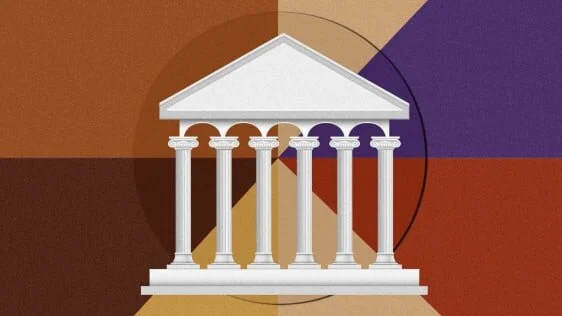I’m a Black Woman in Fintech. My Industry Has To Overcome Its Racism To Survive
The CEO of Wells Fargo, one of the largest banks in the U.S., recently attributed the lack of diversity in financial services to a “very limited” talent pool. This struck me as another opinion formed by someone who has spent too much time in the echo chamber of traditional banking. Instead of blaming the pipeline, banking leaders should take a hard look at the barriers they’ve built that keep people of color from accessing—and by extension, pursuing careers—in financial services.
I can tell you from firsthand experience that, yes, there are few Black and Latinx people in leadership roles at big banks, and fewer still who have lived the experience of the underbanked. The result is that the experiences of those communities never make it into the spaces where decisions are being made.
Black and Latinx bank customers pay far more to maintain a checking account with 40% of Black Americans and Latinos paying bank fees, compared to only 22% of white Americans. When you consider this lack of representation and its impact, is it any wonder that these communities don’t have a positive relationship with big banks?
The reasons behind this disparity stem from a long, complicated history of barred access and discrimination that has fueled rampant racism within the retail banking system. Bank branches in Black and Latinx communities require higher minimum balances in order to avoid fees. One study cited an average minimum balance requirement of $870 for Black communities and $625 for white communities—a difference of $245 that can be huge for those living on a tight budget.
These statistics are more than numbers to me—they were my reality for a long time. My early adulthood coincided with the great recession of 2008 and its aftermath. What I remember most were the frustrations of underemployment, past-due notices for bills, and the crippling overdraft fees and charges that I thought of as my “broke tax.” I checked my bank balance several times a day and still often spent more than $200 on overdraft fees alone in one year.
Fintech companies can be the solution if they do it right. A new breed of neobanks and tech-driven financial services companies have an opportunity to change the deeply entrenched racism that plagues our financial system. These new companies are founded by a new generation of leaders who profess that they want to democratize access to capital and disrupt big players like Wells Fargo.
They can start by bringing more Black and Latinx people into their companies, which in turn will help them develop financial products that serve communities of color. Doing this—virtuous circle alert!—will encourage young people from all backgrounds to see financial services as an attractive industry to join and build. But how can the fintech industry implement lasting change rather than rely on excuses?
ACTIVELY SEEK DIVERSE TALENT—AND MAKE ROOM FOR THEM AT THE TOP
Building an executive team that represents the diversity of fintech’s customer base requires genuine intention and creating space for those with diverse backgrounds to feel supported. When meeting with the CEO of my current company as I researched the role, I asked: “What is it like being a Black woman at your company?”
He answered plainly that he couldn’t answer that question because it wasn’t his experience—but he was able to put me in touch with a Black woman executive on the team so I could ask her directly. I learned later on that he had identified this executive as a master in her field and worked with her for months to ensure that she felt supported and comfortable leaving a more established company to join the relatively young startup.
A two-hour lunch with her sealed the deal. I was in, knowing that I was joining a company where I not only would feel seen and heard but also celebrated for my differences and the unique point of view that I bring to any decision-making table.
FOSTER AN INCLUSIVE ENVIRONMENT
We hear it all the time—studies have shown that diverse teams are more innovative, better at problem solving, and more successful than their homogeneous counterparts.
But what does that look like in practice? I remember recently working on a financial product that required a social security number for validation. But not everyone has a social security number, including some immigrant or displaced families. We made sure to also include a taxpayer identification number as a way to validate our customers’ identity.
That simple switch—spurred by having a diverse perspective in the room—meant that individuals who were undocumented and unbanked would have access to the product.
If individuals from marginalized or underrepresented backgrounds enter an organization but don’t feel represented, heard, and supported, it will be impossible to retain them, and their good ideas will never be reflected in the final product.
CREATE SAFE SPACES FOR EMPLOYEES
So, how can you foster an environment where diverse employees feel seen and supported as they share their ideas? Often the very first step is creating “safe spaces.” Recently when working with a company that had experienced several departures by Black employees, I led the leadership team in instituting skip level meetings where executives could hear employees’ experiences of microaggressions and feeling undervalued.
If only we had set up those meetings sooner, those employees may never have left. Now, skip level meetings and committees of representatives from across teams at a company are commonplace at companies that are making strides toward diversity—a trend that must continue if we’re to improve diversity moving forward.
The fintech community needs to do better than its predecessors and look beyond diversity as a “talent pool” issue. This means not only seeking out and fostering diverse talent but also putting their insights into practice. By taking a stand, we’ll be positioned to do what the legacy system could not—actively improve the finances of the people we seek to serve.


